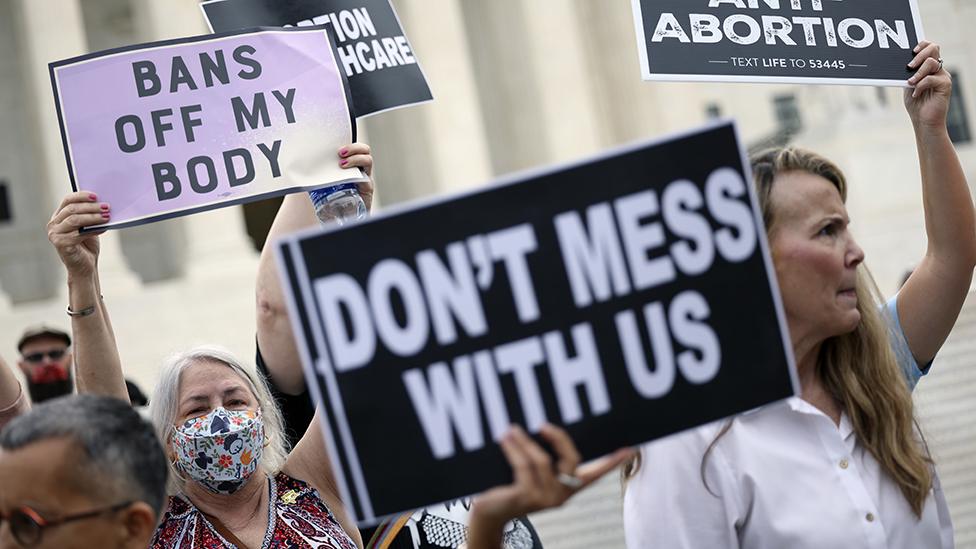Roe v Wade: What is US Supreme Court ruling on abortion?
- Published

Abortion was made legal across the US after a landmark legal ruling in 1973, often referred to as the Roe v Wade case.
Now the US Supreme Court - the nation's most senior legal body - has overturned that right.
Twenty-six conservative states are either certain or considered likely to introduce new abortion restrictions or bans.
What was Roe v Wade about?
In 1969, a 25-year-old single woman, Norma McCorvey using the pseudonym "Jane Roe", challenged the criminal abortion laws in Texas. The state forbade abortion as unconstitutional, except in cases where the mother's life was in danger.
Defending the anti-abortion law was Henry Wade - the district attorney for Dallas County - hence Roe v Wade.
Ms McCorvey was pregnant with her third child when she filed the case, and claimed that she had been raped. But the case was rejected and she was forced to give birth.
In 1973 her appeal made it to the US Supreme Court, where her case was heard alongside that of a 20-year-old Georgia woman, Sandra Bensing.
They argued that abortion laws in Texas and Georgia went against the US Constitution because they infringed a woman's right to privacy.
By a vote of seven to two, the court justices ruled that governments lacked the power to prohibit abortions.
They judged that a woman's right to terminate her pregnancy was protected by the US constitution.
How did the case change women's rights?
The case created the "trimester" system allowing:
an absolute right to an abortion in the first three months (trimester) of pregnancy
some government regulation in the second trimester
states to restrict or ban abortions in the last trimester as the foetus nears the point where it could live outside the womb
Roe v Wade also established that in the final trimester, a woman can obtain an abortion despite any legal ban only if doctors certify it is necessary to save her life or health.
How has Roe v Wade been overturned?
The Supreme Court has ruled in favour of Mississippi's ban on abortions after 15 weeks.
In doing so, it has effectively ended the constitutional right to an abortion for millions of US women.
Individual states are now able to ban the procedure again.
Half of the states in the US are expected to introduce new restrictions or bans.
Thirteen have already passed so-called trigger laws that will automatically outlaw abortion following the Supreme Court's ruling. A number of others are likely to pass new restrictions quickly.
There are nine judges on the Supreme Court, six of whom were appointed by Republican presidents.
A draft opinion from one of these - Judge Samuel Alito - was leaked in May 2022. It contained the comment that the Roe v Wade judgement is "egregiously wrong".
What restrictions on abortion had already been introduced?
Even before the US Supreme Court's latest ruling, anti-abortion campaigners had been regaining some ground.
In 1980, the court upheld a law that banned the use of federal funds for abortion except when necessary to save a woman's life.
Then in 1989, it allowed states to prohibit abortions being carried out in state clinics, or by state employees.
The biggest impact came from the top court's ruling in Planned Parenthood v Casey in 1992.
Ruth Bader Ginsburg told the BBC in 2019 that abortion restrictions affected low income women most
It said states could restrict abortions even in the first trimester for non-medical reasons.
As a result, many states already have restrictions in place, such as requirements that young pregnant women involve their parents or a judge in their abortion decision.
Other states already have waiting periods between the time a woman first visits an abortion clinic and the actual procedure.
As a result, many women are having to travel further to get abortions, often across state borders, and they are having to pay more for them.